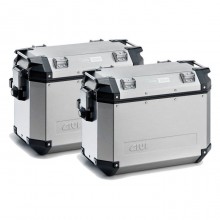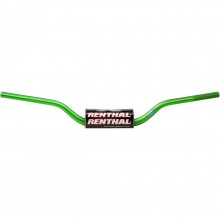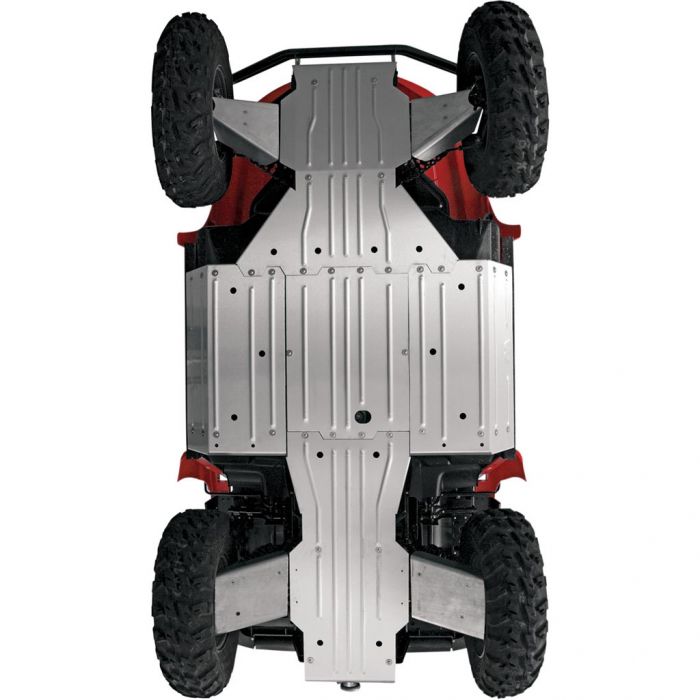
Who Killed the 2-Stroke Motorcycle?
Did corporate greed really lead to the premature death of the 2-stroke dirt bike, or are we the ones responsible?
Shop Now
Jan 21, 2023 — Sit down. Because I’m about to drop some numbers that will piss you off.
- The 1985 Honda CR500R (2-stroke) delivered 66 horsepower and weighed 105kg.
- The 2023 Honda CRF450R (4-stroke) delivers 52.5 horsepower and weighs 111kg.
Both dirt bikes were the flagships of their day. So almost 4 decades and billions of dollars in R&D has yielded a loss of 13.5 horsepower and a gain of 6 kilograms. Of course, we can yammer on about braking, suspension, electrical gizmos and ride-ability. But that won’t hide the fact that we've moved backwards in 2 key areas.
So what the hell happened? Simple: the 2-stroke dirt bike met a premature death. The common verdict is that corporate greed murdered it.
I disagree.
Manufacturers might have prepared the smoker for the slaughter. But, in true Nietzschean fashion, the 2-stroke is dead, and we have killed it.
The Money Problem: 2-Strokes are Cheap
2-strokes don't cost much. They have a minuscule number of moving parts, so factories can roll them off the assembly line for nothing. Plus, they can be rebuilt between races by a half-drunk amateur mechanic. The average 2-stroke rider buys his bike for a pittance (often used) and maintains it himself for the next 10 years. That’s great for Mr. 2-stroke. But his customer value to corporations like Honda, Suzuki, Yamaha and Kawasaki is almost nil.
Manufacturers love 4-strokes though. They produce less power per cubic centimeter than 2-strokes, so they have to hit ridiculously high RPMs to stay competitive. They’re also crammed tight with moving parts. And getting a complex engine to move at 13 000 RPMs is a lot of work, so the components are built from ultra-light materials that are easier to push around. Of course, ultra-light materials are either expensive, weak or both. So the result is an extremely costly engine that works very hard to move fragile components up and down really fast. In other words: ka-boom!
So, the average 4-stroke rider buys his bike for a small fortune, then takes it back to the dealership for maintenance every 15 hours. And when it’s time to replace the whole thing, he heads to the dealership again because used thumpers are as trustworthy as grenades. Needless to say, corporations drool over customers like Mr. 4-stroke.
Manufacturers have plenty of reasons to get excited about the 4-stroke at this point. But it’s the 1990s and the entire world is riding 2-strokes. So how do you sell the masses on a new motocross bike that is slower, heavier, more expensive and harder to work on?
The AMA Solution: 4-Stroke Exemption Rule
This is normally where people get all conspiratorial, whining on about Honda "buying" the AMA and slipping NyQuil into the 2-strokers porridge. I don’t think that the rise of 4-strokes was so simple.
On the one side, yes, manufacturers did pressure the AMA into allowing 450cc 4-strokes to race against 250cc 2-strokes. But there was also pressure from environmentalists, who thought that having a few more 4-strokes in professional motocross would somehow save the polar bears. And finally, the AMA undoubtedly had the good-natured intention of mixing it up a little bit.
So the double displacement handicap went through and all the professionals jumped onto 4-strokes overnight. Even purists like Bubba Stewart couldn’t resist an extra 200 cubic centimeters for long.
Now pay attention. Because this is where it gets suspicious.
As soon as the professionals started riding 4-strokes, the manufacturers stopped developing 2-strokes. Why? It’s not like Honda couldn’t afford to develop racing and consumer technology. Mercedes doesn’t stop producing the S-Class because they also have an F1 car.
And believe me, the 2-stroke was still the consumer technology of choice. The vast majority of amateur racers were using smokers. True, the Greenpeace posse was gathering their pitchforks and solar-powered torches for a 2-stroke witch hunt. But we all know that doesn't mean squat to the average rider. Granola folks can make as much noise as they want, but we still can't hear them over our 2-stroke's BRAAAAP!
Trail trotters were using 2-strokes at the time as well. Either that or air-cooled thumpers, which haven't used up R&D dollars since the industrial revolution. So manufacturers had no legitimate reason to phase out the 2-stroke. Too many people still wanted to buy them.
But the truth is, manufacturers had wanted to stop making 2-strokes for a long time (because of the whole money thing). And with the new AMA rules, they finally could. If an OEM doesn’t need a 2-stroke to compete on, they have no obligation to homologate one for public use. They can phase the smokers out of their lineup and their Q4 won’t be affected in the slightest.
We Killed the 2-Stroke Dirt Bike
The thing is, corporations are still tied to a little thing called supply and demand. The professional level dictates what corporations can do. But millions of amateurs dictate what corporations must do. If we all insisted upon riding a 2-stroke, the corporations would be forced to keep making them (or go bankrupt). That’s just business.
But we didn't insist.
As soon as we saw Ricky Carmichael on a 4-stroke we were happy enough to ride one too. Never mind that it’s slower than the 2-stroke equivalent! Never mind that I don’t have a pit crew to rebuild it for me! Never mind that Suzuki actually makes me pay for it! If the GOAT has one, I’ll have two.
Corporate greed wanted the smoker dead. But they didn’t have to kill it. All they had to do was remove the 2-stroke’s AMA lifeline. After that, it was only a matter of time until we finished the job. It was a one-two punch of negligence and vanity. Our desire to imitate the professionals murdered the 2-stroke.
Or did it?
The Return of 2-Stroke Motocross Bikes
People are starting to rebel against racing 4-strokes — especially amateur MXers, who feel the weight of the manufacturer’s cash cow more than anybody.
But in the past decade, more and more manufacturers started including 2-strokes in their catalog once again. Sure, the blue one is actually a decade-old motorcycle with shiny plastics... But KTM is making a giant leap forward with their 2023 SX line-up, complete with a new electronic fuel injection system. Could this be the start of the modern 2-stroke era?
Like a bad detective novel, the victim just waltzed into the room to announce that they were never dead in the first place.
Related Articles

How to Legally Ride Off-Road in Canada
Ready to hit the trails? Not so fast! Turns out, there are laws you should know if you don't want all the fun spoiled.

The Problem with the Café Racer Craze
Café Racers are very popular nowadays, but what type of rider are they really suited for?

Is a Mountain Bike Good for Long Distances?
Long distance cycling has its challenges. Are mountain bikes up to the task?





























































































